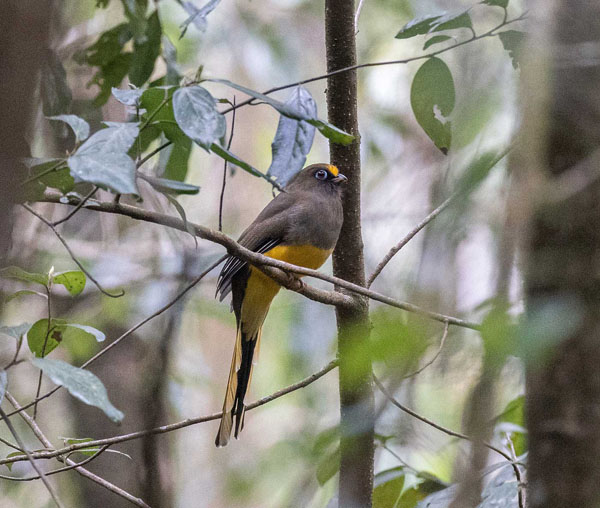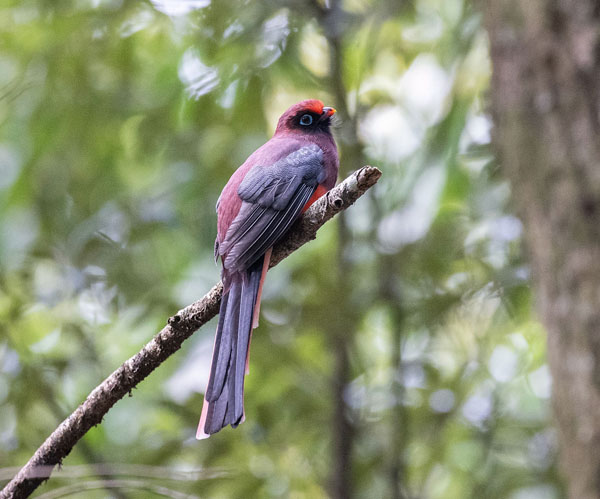Harpactes wardi
IUCN
LCBasic Information
Scientific classification
- name:Harpactes wardi
- Scientific Name:Harpactes wardi,Ward's Trogon
- Outline:Climbing birds
- Family:Trogonidae
Vital signs
- length:35-38cm
- Weight:110-120g
- lifetime:
Feature
Very beautiful bird
Distribution and Habitat
In China, it is distributed in the Gaoligong Mountains from southeastern Tibet to northwestern Yunnan, and may also be found in high-altitude mountains in southeastern Yunnan. Abroad, it is found from the eastern Himalayas to northeastern India, northeastern Myanmar, and northwestern Vietnam.
It lives in subtropical forests in Southeast Asia, especially secondary dense forests. It is active in broad-leaved forests and evergreen forests, and is often found among typical tree species such as oak, oak, and castanopsis. It also likes bamboo forests. It can sometimes be seen at an altitude of 300 meters, and the most suitable living altitude is between 1500-3200 meters above sea level. It descends to low altitude areas in winter.
Appearance
The lower body is crimson, the body is large, the head is round and the tail is long. The forehead and top of the male bird are red, the upper chest, upper body and central tail feathers are chestnut brown and stained crimson, the wings are black, the edges of the primary flight feathers are white, and the lower chest to the lower tail cover feathers are crimson; the female bird is similar to the male bird, but the dark parts are grayer, and the corresponding parts of the crimson parts of the male bird are bright yellow. The iris is brown, the skin around the eyes is blue, the beak is pink, and the feet are pink-brown.
Details
The red-bellied trogon is a crimson and dark chestnut trogon. It has an orange-yellow eyebrow pattern; the central tail feathers are black. The outer tail feathers of the wedge tail are crimson on the ventral side as a distinguishing feature.

The red-bellied trogon often moves alone or in pairs; it is arboreal, either climbing on the top branches of small trees to eat wild fruits, or standing quietly on the branches waiting for an opportunity to pounce on flying insects, and occasionally following flying insects. It has poor flying ability, and although it is fast, it does not go far, and it comes and goes very quietly. It is mainly insectivorous (moths, all types of stick insects, caterpillars, locusts), decorating the nest with grass leaves and seeds, and feeding on flying insects or berries and larger seeds on trees.

The red-bellied trogon does not like to call; the general call is a loud and fast-moving round klew sound, and the pitch decreases as the call speed increases, which is completely different from the call of the red-headed trogon. The alarm call is a whirr-ur sound.
The breeding season is about March-April. Reproduction data is still lacking. The male specimen collected on April 5 had fully mature testicles, and the female bird's oviduct was enlarged, showing signs of egg-laying.








